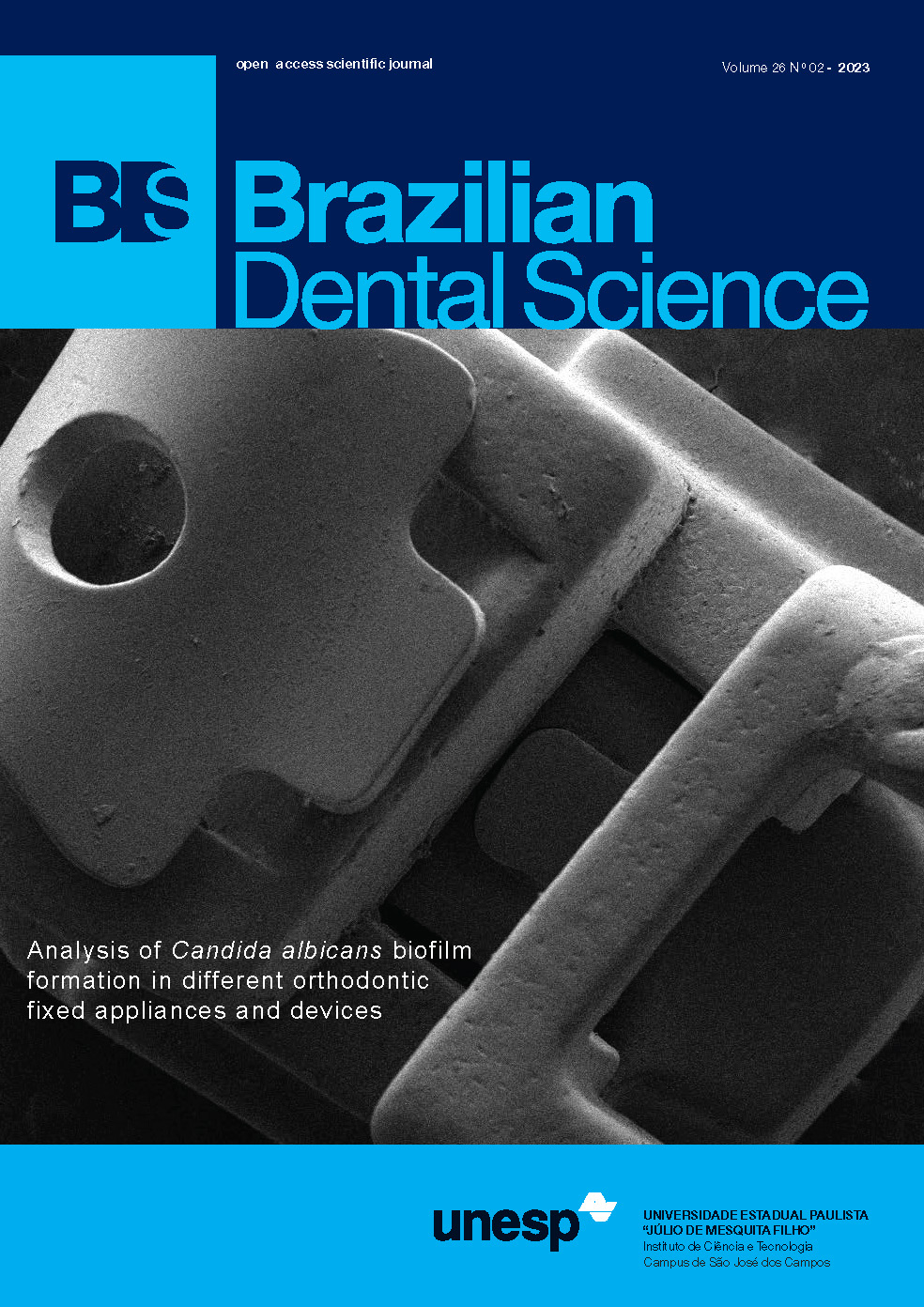Caregiver perception of children’s dental caries and experience of accessing dental health services for their children
Caregiver Perception of Children’s Dental Caries and Accessing Dental Health Services
DOI:
https://doi.org/10.4322/bds.2023.e3749Abstract
Objective: this study aims to know the caregiver’s perception of children’s dental caries and their experience of accessing dental health services in children. Material and Methods: this research was an analytic observational study with a cross-sectional method and used a purposive sampling technique with a sample of 56 respondents. Data were obtained through a questionnaire and the sampling technique used purposive sampling with samples were all caregivers at Cahaya Tazkia Kindergarten, Yapita Kindergarten, and Aisyiah 52 Kindergarten Surabaya. Data were analyzed using a correlation Spearman test. Results: perceived benefit and self-efficacy had a significant correlation with the experience of accessing dental health services (p-value - < 0.05) with coefficient correlations were 0.168 and 0.936 respectively. Meanwhile, perceived susceptibility, perceived severity, and the perceived barrier had no correlation with the experience of accessing dental health. Most male respondents in this research had a proper job to manage their children to go to dental health. Perceived susceptibility, perceived severity, perceived benefit, and self-efficacy of women caregivers in productive age were good but the perceived barrier showed a high mean. Respondents with that characteristics did not have steady jobs. Conclusion: women caregiver between the age of 21-40 years old believes that maintaining oral health is beneficial and will result in an increased number of accessing dental health services for their children. But caregivers who were women and also did not have a steady job had barriers to accessing dental health for their children.
KEYWORDS
Child health; Caregiver; Dental caries; Accessing dental health service; Perception.
Downloads
Published
How to Cite
Issue
Section
License
Brazilian Dental Science uses the Creative Commons (CC-BY 4.0) license, thus preserving the integrity of articles in an open access environment. The journal allows the author to retain publishing rights without restrictions.
=================




























